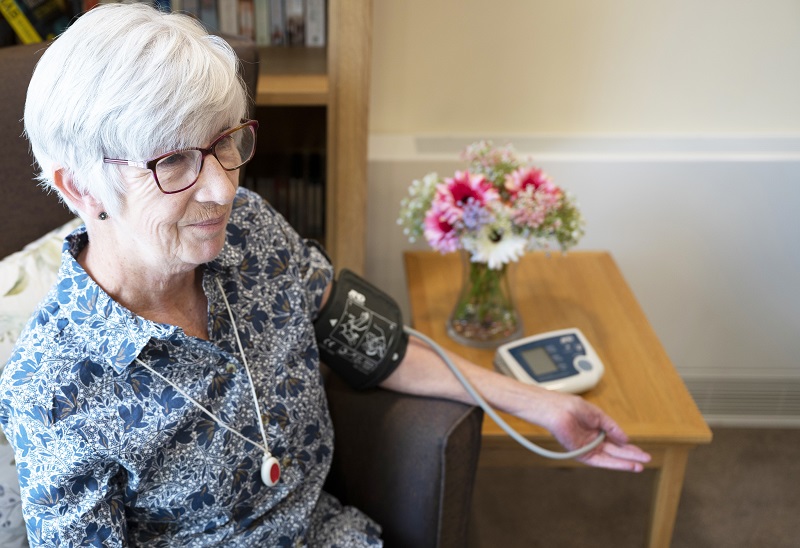As our population ages there is a corresponding increase in the prevalence of chronic diseases, which are major causes of morbidity and mortality.
In 2020, it was estimated that 1.3 million people in Ireland were living with one of the major chronic diseases: cardio-vascular disease, chronic obstructive pulmonary disease, asthma, or diabetes, and this is set to increase by around 40% over the next decade.
Chronic disease accounts for 40 percent of hospital admissions andAnd, according to the Government of Ireland National Risk Assessment of 2019, these account for 75% of hospital bed days, as well as leading to additional demand for residential care places.
But could technology hold the key?
Gavin Bashar, UK managing director at Tunstall Healthcare, said: “Redesigning healthcare services using digital technologies lies at the heart of national and international policies for future health provision, helping to manage increasing demand effectively and improve population health.
“Telehealth can be used to support people to self manage their chronic health conditions within their own homes, and international research has demonstrated the many benefits of such remote monitoring, including cost savings.”
A telehealth pilot
A telehealth pilot project was undertaken in County Wexford in 2021, overseen by a multi-agency stakeholder group including Age Friendly Ireland, the Integrated Care Programme in the HSE, Wexford General Hospital, Tunstall Emergency Response, and Wexford County Council’s Age Friendly programme.
The project set out to provide a 12-week telehealth intervention to 50 patients with a chronic illness and was independently evaluated by the Waterford Institute of Technology.
One patient described the service as ‘magic’ and it was great to see the way it changed his life so that he now feels confident to recognise signs and symptoms and therefore when he can be more active and when he needs to rest
Suzanne Denieffe, head of the School of Humanities at Waterford Institute of Technology, said: “The research team and I were invited to evaluate the pilot study, which took place during the height of the pandemic.
“Managing chronic conditions is difficult at the best of times. However, this was exacerbated by the difficulties around health monitoring and care provision during the pandemic.
“The pilot project was designed to explore the potential of telehealth to support patients at home living with chronic conditions, particularly as they were experiencing social isolation at the time, and many were experiencing disruption to their clinical care.”

Tunstall Healthcare provided patients with vital signs monitoring equipment so they could track their health from home
The objectives
The objectives of the pilot were to establish a proof of concept for the provision of a telehealth service for three identified chronic conditions – chronic health failure, diabetes, and chronic obstructive pulmonary disease – in County Wexford, with a potential to scale up nationally.
The research aimed to evaluate the pilot telehealth intervention, considering the impact on the patient’s clinical condition and wellbeing; in-person use of health services; patient and clinician perceptions of the intervention and technology; and the cost effectiveness of the intervention.
The technology
The myMobile patient app and triageManager from Tunstall were provided to the patients for the 12-week duration.
The myMobile is a patient app which enables self management and monitoring.
The app collects data from monitoring devices on vital signals such as pulse, oxygen levels and blood pressure, as well as patient symptoms. And it provides a range of benefits including automatically-updated readings via Bluetooth connected devices and the ability for manual entry of readings and automated alerts and activity reminders.triageManager is a clinical management software platform which enables clinical and service teams to monitor patients remotely.
The system enables a number of outputs including automated prioritisation tools and summary reports for clinicians.
Commenting on the technology, Denieffe said: “The Tunstall technology was very clear and easy to us and the team offered expert support throughout, helping to deliver a really-efficient service.
“Patients felt very supported, and it became clear how much telehealth helps self management.
“One patient in particular described the service as ‘magic’ and it was great to see the way it changed his life so that he now feels confident to recognise signs and symptoms and therefore when he can be more active and when he needs to rest.”
The findings
Patients were highly engaged with the project, with 98% of readings recorded. There were also low levels of attrition, which were partly due to the support provided by Tunstall with any queries they had, and reminders to take readings.
One participant commented that “It’s nice to know you are being monitored, which gives you more confidence.”
Another added that it gave them confidence in their illness management, saying: “I think because when I knew my oxygen levels were good, it gave me more confidence to go about my day and do more activities.”
And one participant found their use of the health service improved.
The HSE in Ireland is committed to digital transformation and driving service improvement using technology and, at Tunstall, we were delighted to be involved in the telehealth pilot
They said: “I think the change for users is that you can get a check from home without having to constantly go back and forth to the hospital.”
And James Doyle, managing director of Tunstall Emergency Response, described telehealth as ‘the future of healthcare’.
He told BBH: “It offers services that can be designed around the patient, providing support in the community and helping to keep people out of hospital.
“The HSE in Ireland is committed to digital transformation and driving service improvement using technology and, at Tunstall, we were delighted to be involved in the telehealth pilot.
“It is absolutely achievable that more people can live independently for longer at home and feel empowered to self manage and stay well.”
Thanks to the success of the first phase, a second phase is planned to begin later this year, covering five counties and 250 patients.
